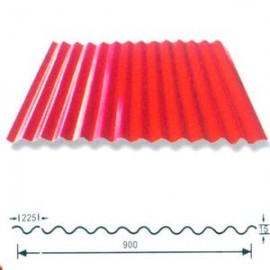
According to production and processing methods PPGI can be divided into the following categories:
a) hot-dip galvanized steel. The steel sheet was immersed in molten zinc bath, the adhesion to the surface layer of zinc sheet steel. At present, continuous galvanizing production process, namely the continuous rolls of steel dipped in melted zinc plating bath is made of galvanized steel;
b) alloyed galvanized steel. This plate is manufactured by hot dip method, but after the trough, immediately put it heated to about 500 ℃, it generates an alloy of zinc and iron film. This galvanized sheet with good paint adhesion and weldability.
c) electro-galvanized steel. Manufacturing galvanized steel sheet having such a good processing by plating. But the coating is thin, corrosion better than hot-dip galvanized sheet method;
d) single-sided and double-sided plated poor galvanized steel. Sided galvanized steel, i.e., only one side galvanized products. In terms of welding, painting, rust treatment, processing, has a better than two-sided galvanized sheet adaptability. To overcome the disadvantages of single uncoated zinc, another one in another top coat with a thin layer of zinc galvanized sheet, ie the difference between two-sided galvanized sheet;
e) alloy, composite galvanized steel. It is steel with zinc and other metals such as lead, zinc alloy and even made into composite plating. This steel has both superior rust resistance, and good coating performance.
In addition to these five, there are colored galvanized steel sheet, galvanized steel sheet coated printing, polyvinyl chloride laminate galvanized steel sheet and the like. But still the most commonly used hot-dip galvanized sheet.
Galvanized steel can be divided into general use by end-use, roofing, building outside of the plate, structure, tile ridge board, stretching and deep drawing and other galvanized steel.








